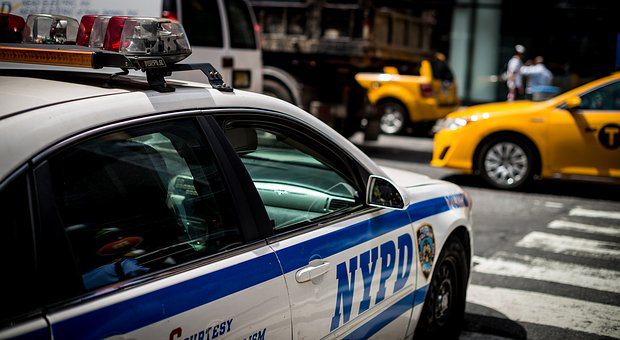
- admin
- July 24, 2020
- 9:14 pm
- No Comments
Police Ranks — Breaking Down the Different Law Enforcement Positions
The potential of moving up the ranks in law enforcement is undoubtedly one of the best reasons to choose law enforcement as a career. Command structures are an essential element of efficient police forces and are, in many ways, similar to military promotions than those in corporate hierarchies.
Not every police career path is identical, but a general understanding of the ranks provides a good idea of what new officers can expect.
Here, we’ve broken down the police ranking structure, with some responsibilities and qualities that define each position.
1. Police technician
This entry-level position involves handling the backlog of non-violent crimes and other routine tasks, such as issuing parking tickets, recording public complaints, enforcing parking regulations, directing traffic at crime scenes, and a number of other tasks that form the foundation of the police department.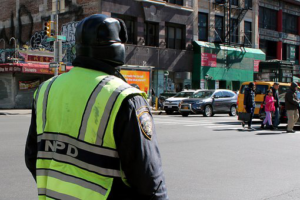
Most technicians are assigned the responsibility of keeping records organized and preparing paperwork for incident reports as well. This ensures that law enforcement officials can pursue crime in an integrated, methodical, and department-wide manner.
At this level, most technicians don’t require any experience, but the minimum education level is usually a high school diploma or equivalent.
2. Police officer/patrol officer/police detective
Naming conventions and rank structures vary across different law enforcement agencies. While federal agencies have their own systems, local police structures may differ. Police officers, patrol officers, and police detectives all represent similar responsibilities and ranks, which is why we’ve grouped the three here.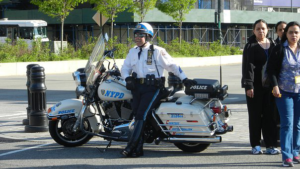
These law enforcement officers often patrol assigned locations, respond to emergency and non-emergency situations, investigate crimes and apprehend suspects. These positions make up the bulk of the police force, and the people in them are the backbone of the organization.
Most detectives go through a training academy in their area before they can start to work. The education requirements range from a high school diploma to a Bachelor’s degree, depending on the employer’s requirements.
3. Police corporal
Distinguished police officers that show promise are given this position to test and acknowledge their leadership skills. Often, corporals oversee small units and watch commanders in the department.
This position is typically the first supervisory role in the agency and can also apply to non-supervisory members of a specialty unit.
4. Police sergeant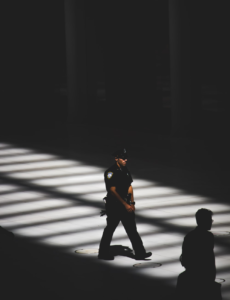
The police sergeant’s duties vary significantly depending on where they work. Smaller agencies skip this rank and assign responsibilities to other roles. In larger agencies, their role is to supervise and train their team, help form new policies, and act as a coordinator between upper management and police officers.
Moving to the sergeant position usually requires a minimum of five years of experience, as well as a vision for the future of the department.
5. Police lieutenant
Police lieutenant roughly translates to middle-managers; these positions require taking a broad vision from superiors and turning it into actionable directives at the individual level.
The responsibilities include ensuring equal opportunity in hiring and promotions, assigning staff, and determining priorities for the department. They take part in performance evaluations and determine the hiring and training needs of the department.
Finally, lieutenants also act as ambassadors for the police department and routinely participate in community efforts and public meetings.
Promotion to this rank requires multiple years of experience, along with excellent leadership and public relations skills.
6. Police captain
Police captains are in charge of entire departments—they monitor, budget, and direct the whole team’s activities. They represent the whole department in the community and local government.
Police captains also need to prepare reports and analyses of the department pertaining to crime and policing in the area.
For this role, applicants need several years of experience in a leadership position, often accompanied by a college degree. The person should also have strong management capabilities with the ability to stay level-headed and competent in stressful situations.
7. Deputy police chief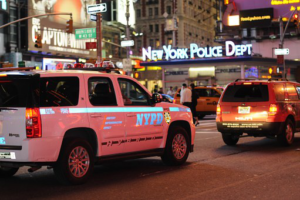
In large municipal law enforcement agencies, the deputy police chief ensures effective administration of the police bureau. Their responsibilities are similar to police captains, except being that they’re prepared to assume control as police chief in case of an emergency.
Along with several years of experience, a Bachelor’s degree in Criminal Justice is often required.
8. Chief of police
The chief of police is the top authority in the police department. These officers supervise all operations of the departments, design programs, and increase the effectiveness and safety of the department.
Police chiefs are usually selected by elected officials, and they have to work closely with mayors and government officials to ensure proper working of the city’s law enforcement agencies.
Kickstart Your Career as a Successful Police Officer In New York
As you can see, working your way through the police ranks is rewarding, but it does require utmost dedication and the drive to self-improve continuously.
If you think you’ve got what it takes, you can start preparing for your civil service tests today.
Sign up for preparation courses and comprehensive workshops with the leading civil service exam preparation institute in New York. At Civil Service Success, we are dedicated to our candidates and ensure they score top marks on their first attempt. We offer the services of highly trained and qualified instructors as well as extensive resources and materials to prepare you for any written and verbal tests in the process of getting hired by the New York Civil Services.
Get in touch with us for more information regarding prep classes for various civil service positions, including the NYS court officer, and Suffolk County Police.

